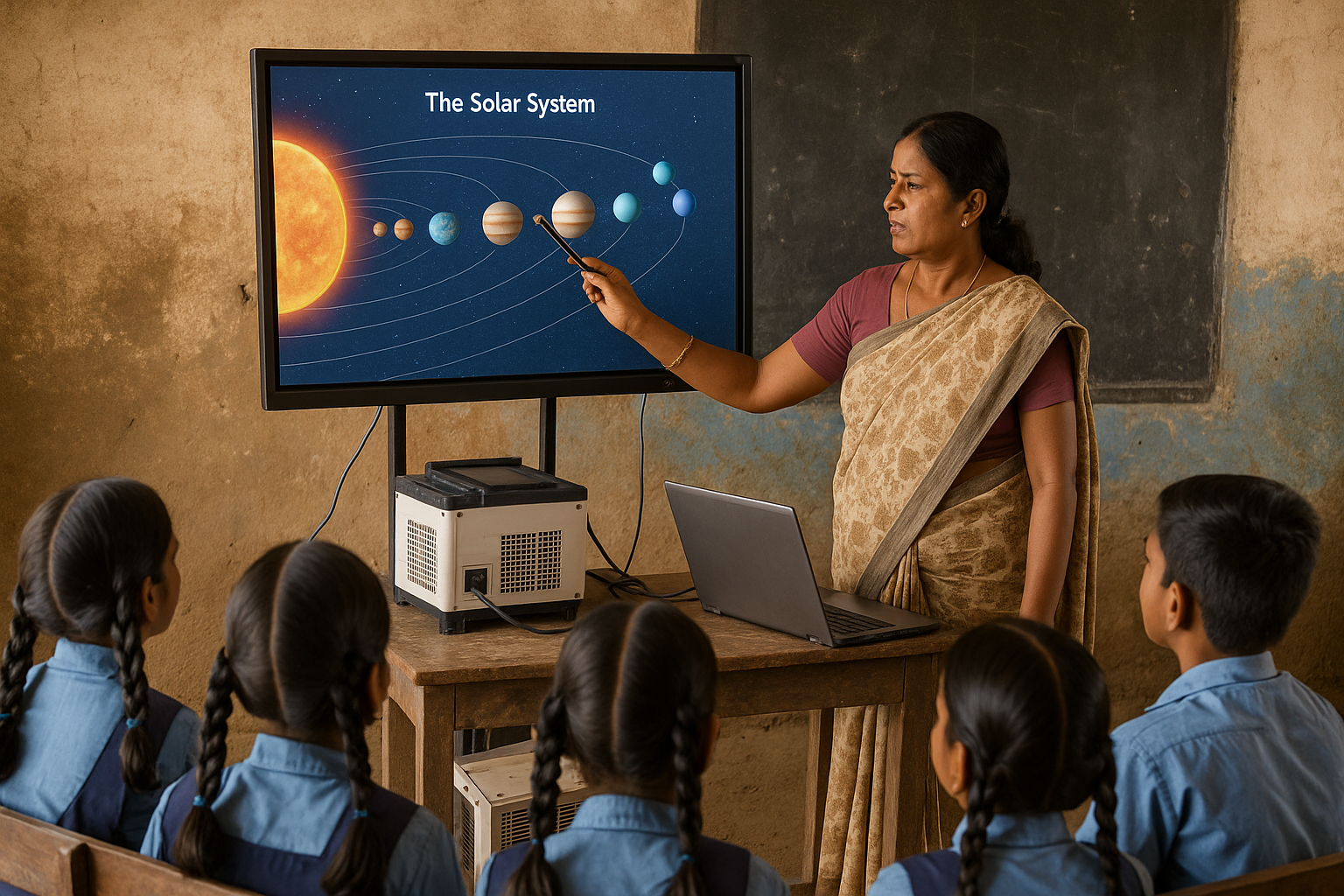Introduction
India’s digital transformation in education often seems centered around urban innovation hubs and private schools. However, a quieter revolution is taking place in the rural heartlands—where dedicated educators, NGOs, and local communities are working together to bridge the digital divide. These stories, emerging from remote villages and under-resourced schools, prove that with innovation and commitment, digital learning can be made accessible to all.
1. Solar Classrooms in Maharashtra’s Satara District
In the small village of Wathar, a government school has become a beacon of digital empowerment. Partnering with a local NGO, the school installed solar panels and introduced low-power tablets for students. These tablets are pre-loaded with educational content in Marathi and English, covering subjects from math to social science. With no dependence on unreliable grid electricity, the solar classroom has ensured uninterrupted digital access.
Impact: Student attendance and engagement have significantly improved, and teachers report better concept retention through interactive lessons.
2. Learning Vans in Tamil Nadu’s Tribal Hamlets
The nonprofit AID India launched mobile learning vans equipped with tablets, digital projectors, and Wi-Fi hotspots. These vans visit remote tribal villages in Tamil Nadu where students have little access to digital infrastructure. Trained facilitators conduct interactive sessions covering foundational literacy, science experiments, and multimedia lessons.
Impact: Over 3,000 children have benefited so far, with many showing measurable improvements in reading levels and digital familiarity.
3. Smart Classrooms in Rajasthan’s Desert Villages
In Rajasthan’s Barmer district, the harsh desert landscape makes education a challenge. But thanks to a public-private partnership, several schools now feature smart classrooms with digital whiteboards, audio-visual content, and remote teacher connectivity via satellite internet. The program also includes regular teacher training workshops to ensure effective use of the technology.
Impact: Students who once relied solely on rote learning are now engaged in dynamic, concept-driven education, leading to improved academic outcomes.
4. Offline Learning with Kolibri in Jharkhand
In regions with little or no internet, Jharkhand schools are using the Kolibri platform, an open-source offline learning system. Preloaded on affordable Raspberry Pi devices, Kolibri provides videos, quizzes, and digital textbooks in local languages. Teachers manage the content and track student progress using simple dashboards.
Impact: Students get the benefits of digital education without needing constant connectivity. Teachers have also reported better classroom control and differentiated instruction.
5. Kerala’s Digital Literacy Drive in Tribal Areas
Kerala’s state-run Hi-Tech School Programme extended to remote tribal areas of Wayanad and Idukki, equipping classrooms with laptops, projectors, and interactive content. The government also launched digital literacy camps for parents and students, ensuring the broader community supports tech adoption.
Impact: Dropout rates have declined, and digital literacy among tribal children has increased, opening doors to scholarships and advanced study options.
Lessons from the Ground
These success stories highlight several key factors that contribute to bridging the digital gap in rural schools:
- Community Involvement: When parents, local leaders, and teachers collaborate, technology adoption becomes sustainable.
- Localized Content: Regional languages and culturally relevant examples make digital lessons more effective.
- Low-Tech Innovation: Offline platforms, solar power, and simple devices prove that high impact doesn’t require high cost.
- Teacher Enablement: Technology only works when teachers are trained and motivated to use it meaningfully.
Conclusion
India’s rural schools may lack infrastructure, but they do not lack determination. The success stories above prove that digital learning is not just for cities—it can flourish in the most remote corners of the country. With continued investment, innovation, and community engagement, we can build an inclusive education system where every child, regardless of geography, has access to quality learning.


Leave a Reply